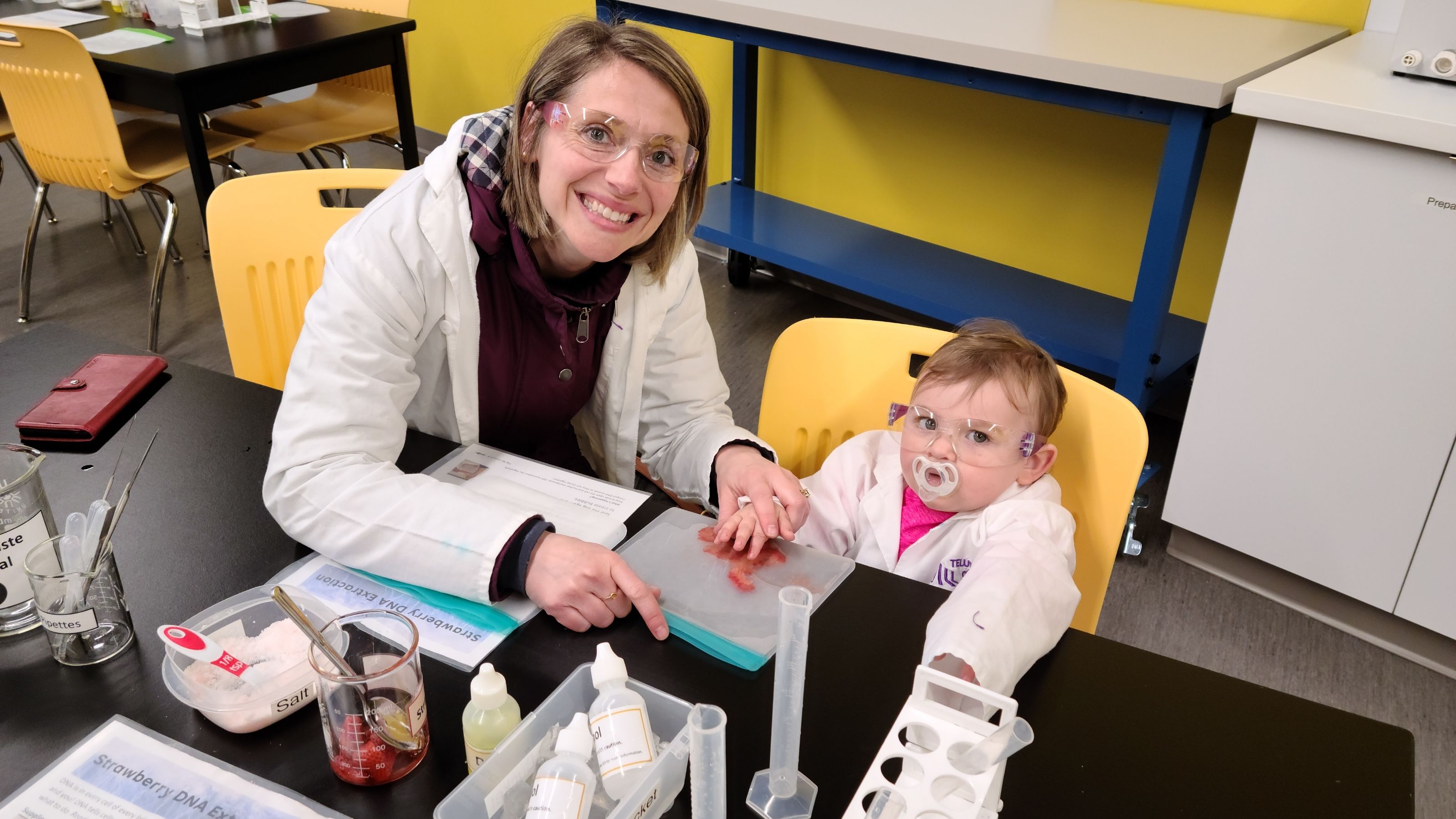Science just isn’t my thing is a sentiment I had conditioned myself to believe. Not even a science project I did in Grade 7 using my mom’s stash of Avon perfume samples helped me maintain an interest in science. Aside from the permeated scents of vanilla, floral and musk filling the classroom, the project was a personal success. I beautified a plain tri-fold presentation board into a dazzling glued masterpiece of cutout perfume bottle shapes and information snippets, and I conquered my public speaking fear to get through my talking points to my classmates who seemed genuinely interested.
But in high school, I “learned” about science by following along with a textbook read aloud verbatim. Predictably, this didn’t help me foster ideas that science could be fun or engaging, let alone a worthwhile academic journey or career to pursue. My analysis led me to cast a very wide, very faulty generalization about science and the space I held for it.
As I get (ahem) older and take on an additional lens of motherhood, I want to be purposeful in how I demonstrate the value of learning science. And, now that I'm employed at one of the top leading universities home to exciting, diverse and accessible research and innovation, I can share in getting curious and exploring science with my daughter, Maya.
I recently visited the Telus World of Science Edmonton Health Zone—an exhibit that included U of A research in health, including human nutrition and body composition, COVID-19 modeling and treatments, kinesiology, and antibiotic resistance, among other subjects. Research was contributed by Dr. Carla Prado (Faculty of Agricultural, Life & Environmental Sciences), Dr. Katherine Aitchison, Dr. Jayan Nagendran, Dr. M. Joanne Lemieux, Dr. John Lewis, Dr. Tanis Dingle (Faculty of Medicine & Dentistry), Dr. Russ Greiner and Dr. David Wishart (Faculty of Science), Alex Game and Michael Scarlett (Faculty of Kinesiology, Sport, and Recreation) and Dr. Simon Otto (School of Public Health). This exhibit is evidence that science is fun, engaging and interesting. Though anecdotal based on observation, I believe my daughter thinks so too. Seeing the joy and excitement of others who engaged in the exhibit’s interactive research is additional data I gathered to confirm my newfound appreciation of science.
For Jeff, my partner, the Get a Grip on Health and Finding Balance were exhibit activities that reaffirmed his physical and mental strength, confirming those sleepless nights transitioning to parenthood didn’t get the best of him (yet).
For Maya, the Vein Finder activity captured her interest with what could only be described as a lesson in turn taking (or impatience) while she awaited her (multiple) turns in between the groups of families and kids who stopped by.
I appreciated the Time to Relax activity and the Jump Up, Jump Around section where I could test my jumping skills while carrying a packed diaper bag.
And, though not part of the U of A research, sharing space with the exhibit area that day was a fun, interactive strawberry DNA extraction experiment where Maya could smash strawberries while donning a little lab coat and safety glasses.
Maya can continue to expand her knowledge about and engage in science at home, including through one of her favourite go-tos: books. The educational book series, launched by U of A’s Future Energy Systems, features a cartoon cat and dog (two animals Maya loves to point out in books and while out for walks) will help shape her interest and captivate her attention. And, the U of A’s renewed collaboration with the Telus World of Science Edmonton will help science research and literacy become more accessible to younger learners via community outreach efforts like Future Energy Systems' recent Energy Adventure event.
So thank you researchers and all those who support their work, here at the U of A and beyond. Thank you for your creativity, your ingenuity and your ability to make science exciting. Your contributions will allow me to further discover alongside Maya, help her recognize the value of science, teach her to advocate for her learning needs and preferences, guide her to using science to solve problems and let her lead in teaching me. Most importantly I’m going to keep propping up the next generation of learners who believe science is fun, engaging and interesting.

About Brigitte
Brigitte recently joined the External Relations portfolio’s Strategic Communications team as a Communications Associate with Internal Communications. Her approach to helping others communicate clearly and effectively while navigating through challenges to achieve their goals has influenced both her educational and career pursuits. She holds a degree in communication studies from Laurentian University, a diploma in journalism from Cambrian College, a post-graduate certificate in communicative disorders assistant from Georgian College and a certificate in editing from Simon Fraser University.
